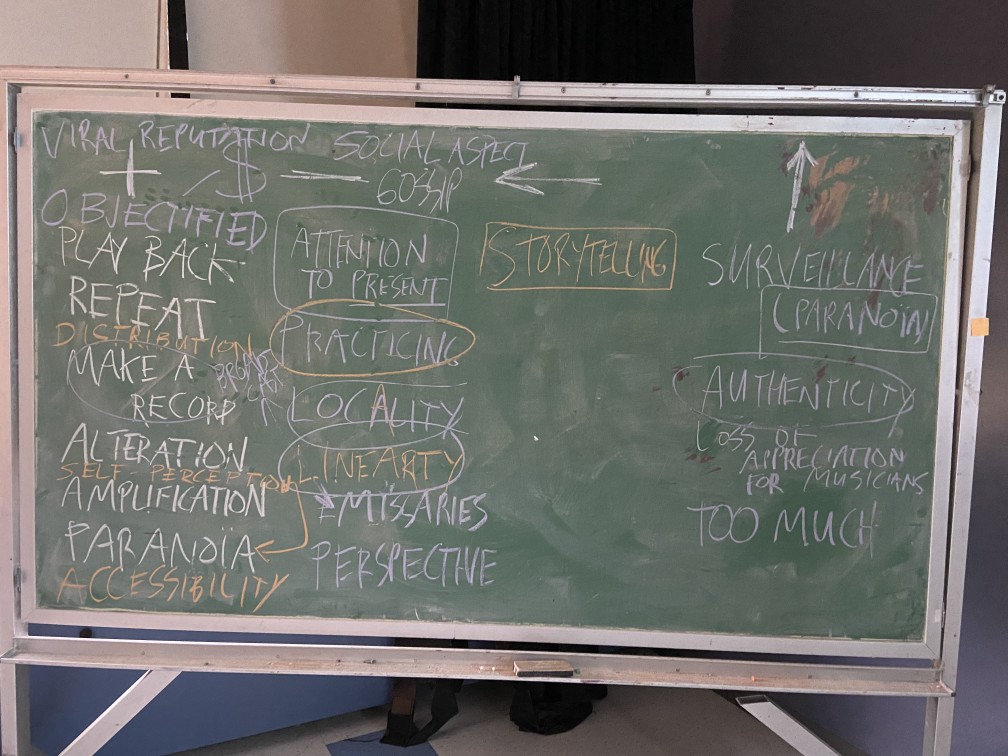 Marshall McLuhan developed a framework to assist in identifying the properties of new technologies according to four characteristics, which he called the Tetrad. Your task will be to apply the tetrad to recording technology. Think about recording technology in relationship with music and sound at large.
Marshall McLuhan developed a framework to assist in identifying the properties of new technologies according to four characteristics, which he called the Tetrad. Your task will be to apply the tetrad to recording technology. Think about recording technology in relationship with music and sound at large.
Look at Edison’s 10 Phonographic Usages for inspiration AND other tetrads pertaining to the CELL PHONE and FACEBOOK.
Answer each of the four questions with one point. (Remember: there are no right or wrong answers – you’ll gain a lot just by grappling with these questions.)
1. ENHANCEMENT: What does this new technology enable, enhance, intensify/amplify or accelerate?
Makes a record of an event that can be played back.
Accessibility in different spacetimes.
Solitary listening – the audiophile.
Sound becomes visual.
Sound becomes objectified (schizo-phonia), an object that can be commodified.
Distortion of the record / reorganization of history.
Reduced listening.
Closer analysis of a sound situation —> every sound becomes meaningful again in general.
Self-scrutiny. (OCD)
Repetition —> Earworms!
Aural control of the environment (background music).
Recalibration, reorganization of an auditory field: recordings create their own reality.
Viral reputation!
2. OBSOLESCENCE: What is pushed aside or obsolesced by this new technology?
The necessity of remembering details. Attention to the present.
Gossip about an event (you can listen to the recording for yourself).
Social gatherings to listen to music.
Humans as musical generators. (Remember the Satie in the gallery story…)
Practicing (auto-tune, Milli Vanilli…). Appreciation for musical ability.
Trust in what is heard (it could be a recording, an edited recording) —> Paranoia!
The need to listen in order to edit. (visual, spatial, non-linear editing suites)
Natural acoustical balance.
Spatial perspective.
Locality. (recordings can be taken with you anywhere)
3. RETRIEVAL: What recurrence or retrieval of earlier actions and services is brought into play by the new form? (McLuhan: “The content of any medium is an older medium.”)
Listening to “hi-fi” natural environments (every tweet, every creak).
The clergy using music as a disciplinary / regulatory apparatus.
4. REVERSAL: What characteristics does this technology reverse into when pushed to its limit?
No events are important when everything becomes recorded and equalized.
Surveillance (when everything is recorded).
Romanticization of live performance.
Sound/music become purely visual (soundcloud) – no need to listen!
Earworms!
Production rather than reproduction (turntable as instrument, glitch music).
Sonic weapons.
